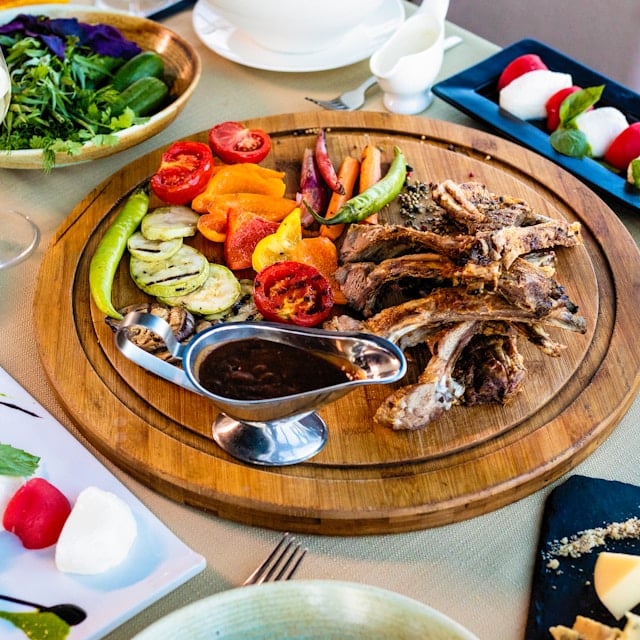Can You Prepare a Gourmet French Ratatouille with Eggplant and Zucchini?

There’s a French classic that has been winning over taste buds for centuries. It’s a dish that has been immortalized in film and has established its place in culinary history. It’s a vibrant melange of vegetables that’s as visually appealing as it is delicious. We’re talking about Ratatouille, a Provençal stewed vegetable dish, originating from Nice, that’s as versatile as it is easy to prepare.
What Makes Ratatouille Unique?
Ratatouille. The name itself is a joy to pronounce, but what is it exactly that sets this dish apart?
Lire également : Can You Make a Flavorful Spanish Gazpacho with Fresh Tomatoes and Cucumber?
Ratatouille is a dish that sings praises for simplicity and freshness. Originating from the sun-kissed fields of Provence, ratatouille traditionally includes eggplant, zucchini, bell peppers, and tomatoes – the best of summer’s bounty in one dish. Over time, other ingredients such as onions, garlic, and herbs like thyme, bay leaf, and basil have found their place in this rustic, hearty stew.
While the choice of vegetables is important, the method of preparation is what ultimately sets Ratatouille apart. Each vegetable is cooked separately before they are combined. This process ensures that each vegetable retains its unique flavor, and they don’t turn into a mushy, indistinguishable mix.
A lire aussi : How to Create a Gourmet American New York Cheesecake with a Graham Cracker Crust?
The Role of Eggplant and Zucchini in Ratatouille
Two of the key players in a traditional Ratatouille recipe are eggplant and zucchini. These vegetables not only add to the heartiness of the dish but also contribute a distinct flavor and texture that is key to making a perfect Ratatouille.
Eggplant, also known as aubergine, is a nutrient-rich vegetable with a unique texture and taste. When cooked, eggplant becomes rich and creamy, adding a lusciousness to the dish. Before adding eggplant to your Ratatouille, it’s best to salt it first. Salting helps to draw out the moisture and bitterness, leaving you with a more concentrated flavor.
Zucchini, on the other hand, is a summer squash that’s known for its mild flavor and tender texture. In Ratatouille, zucchini adds volume and soaks up the flavors of the sauce beautifully. Similar to eggplant, it’s best to salt zucchini before cooking it to draw out excess moisture.
How to Prepare a Gourmet Ratatouille
Now that we’ve explored what Ratatouille is and the role of eggplant and zucchini in it, let’s dive into the process of cooking this classic dish.
Firstly, gather all your fresh vegetables – eggplant, zucchini, bell peppers, and tomatoes. You’ll also need onions, garlic, and a selection of herbs such as thyme, basil, and bay leaf.
Start by dicing the eggplant and zucchini, then sprinkle them with salt and leave them in a colander for about 20 minutes. This will help to draw out the moisture and concentrate their flavors.
Next, heat some olive oil in a large pot. Add the onions and garlic, cooking until they’re translucent and fragrant. Then add the eggplant and zucchini, cooking them until they’re soft but not mushy. After that, add the bell peppers and fresh tomatoes.
Cook the vegetables over medium heat, allowing the tomatoes to break down and form a thick sauce. Add a generous pinch of pepper, along with thyme and bay leaf.
Remember, ratatouille is a slow-cooked dish, so take your time. Allow the flavors to meld together and the vegetables to become tender, but not mushy. This could take anywhere from 30 minutes to an hour. Just before serving, stir through some fresh basil for added freshness and fragrance.
Bonus Tips for a Perfect Ratatouille
While the recipe above will yield a delicious Ratatouille, there are a few additional tips that can elevate your dish from good to gourmet.
-
Quality of Ingredients: Since Ratatouille is a simple dish that relies on the flavors of its ingredients, it’s crucial to use the freshest produce you can find.
-
Cooking Order: Remember, each vegetable should be cooked separately before adding them together. This allows each one to retain its own flavor and texture.
-
Seasoning: Don’t hold back on the seasoning. Salt your vegetables, especially eggplant and zucchini, before cooking to draw out their moisture and concentrate their flavors. Also, don’t forget to season your Ratatouille with pepper and herbs as it cooks.
-
Cooking Time: Ratatouille is best when it’s slow-cooked. This allows the flavors to meld together beautifully. Don’t rush the cooking process – let it take its own sweet time.
Ultimately, preparing a gourmet Ratatouille is about respecting the ingredients and the cooking process. By taking your time, using fresh produce, and seasoning generously, you can create a Ratatouille that’s worthy of its gourmet title.
Serve Ratatouille in Style
Your gastronomical journey doesn’t end with just cooking the dish. Serving Ratatouille is also an art. This is your opportunity to showcase the beautiful colors and textures that make this dish truly unique.
You can serve Ratatouille hot or cold, depending on your preference. It can be a main course, a side dish, or even an appetizer. You can enjoy it on its own or serve it with a slice of crusty French bread or over pasta, rice, or couscous.
For an extra burst of flavor, drizzle some balsamic vinegar over the Ratatouille just before serving. Balsamic vinegar adds a rich, slightly sweet flavor to the dish that complements the hearty vegetables wonderfully.
To serve, ladle a generous portion of Ratatouille into a bowl or plate. Garnish with fresh basil leaves for a pop of color and a burst of freshness. Remember, the presentation is equally important as the taste when it comes to gourmet cooking.
As a gluten-free dish packed with vegetables, Ratatouille is a versatile option that can cater to various dietary needs. Whether you’re serving it to a crowd at a dinner party or enjoying a quiet meal at home, Ratatouille is sure to impress.
Conclusion: The Delight of Cooking Ratatouille
Preparing a gourmet Ratatouille is an immersive experience that allows you to appreciate the beauty of cooking with simple, fresh ingredients. The process may seem elaborate, but it is quite straightforward once you understand the basics.
The key to a perfect Ratatouille lies in the quality of your ingredients and the time you take to prepare them. Remember to cook each vegetable separately, season generously with salt, pepper, and herbs, and slow-cook your Ratatouille to perfection.
Ratatouille is not just a dish; it’s a celebration of the bountiful produce that summer brings. It’s a journey of flavors, from the hearty eggplant and tender zucchini to the sweet bell peppers and ripe tomatoes, all brought together by a medley of aromatic herbs and olive oil.
And, as you savor your gourmet Ratatouille, remember that this is not just a vegetable stew. It’s a culinary masterpiece that has stood the test of time, won over taste buds around the world, and earned its rightful place in the annals of French cuisine.
So, the next time you find your kitchen teeming with fresh vegetables, why not whip up your own Ratatouille? It’s a dish that’s rich in taste, steeped in history, and bursting with the flavors of summer. And, with the right ingredients and a little patience, you too can prepare a gourmet French Ratatouille with eggplant and zucchini. Bon Appétit!
